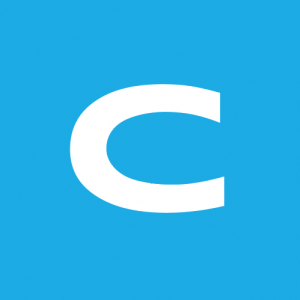Hotel revenue management is a complex process with many moving parts, each affecting the other. From choosing the hotel rack rate to calculating market segment goals, or working to increase hotel occupancy while remaining competitive with the properties around them, hoteliers juggle many responsibilities. One of the keys to success, however, is learning how to balance increasing hotel profits while ensuring the satisfaction of guests.
We created this comprehensive guide to hotel rack rates for new revenue managers and experienced professionals alike. By taking a deeper dive into rack rates, and understanding how they affect a property's rate structure, hotel managers can help maximise revenue potential and keep guests happy at the same time.
What are hotel rack rates?
The rack rate for a hotel room is the published rate for one night’s stay without any discounts or premiums included. Rack rates are the highest price that a hotel will charge for a room, and a single hotel may offer a different rack rate for each room type on property.
Let us help: Hotel revenue management made simple
How are hotel rack rates determined?
Hotel rack rates may be determined by the hotel manager, ownership property, or revenue management team, depending on how the property operates. When hotels determine their room rates, they pay close attention to previous rates at their property, other hotels in the area, and how well the hotel performed at different rate levels.
Rack rates are often based around annual revenue goals for the hotel, such as a 3% increase in ADR, for example. Revenue managers can be tasked with improving profits, often by increasing rates, without sacrificing hotel occupancy. For some hotels, that may mean significantly increasing rates during high-demand seasons to capture more revenue to balance having lower rates during low-demand periods.
In addition to travel demand, a variety of factors can affect a hotel’s rack rate strategy, including:
- Hotel type or category
- Brand recognition and reputation
- Star rating
- Capacity of service (full-service vs. limited-service)
- Available room types
- Room sizes
- Location
- Hotel amenities and services
Rack rates are part of the backbone of hotel revenue management. Promotions, discounts, corporate rates, and revenue goals can all be influenced by the rack rate itself, so it’s vital that a hotel’s rack rate strategy is successful.
7 helpful rack rate strategies for hoteliers
Seasoned hotel revenue managers place a lot of value on the importance of having a well-developed rate strategy. Setting appropriate rack rates that both improve hotel profits and remain competitive requires thoughtful analysis and reflection on previous hotel patterns and future developments.
Try using these helpful strategies to assist in planning your hotel rack rates.
1. Analyse historical data for missed rate opportunities.
Partner hotel performance reports that track occupancy, ADR, RevPAR, stay patterns, and other hotel KPIs with demand forecasting reports to make more informed decisions about future rates.
2. Factor in future forecasts.
Are there any new demand generators coming to the area? What about areawide events, conventions or conferences? When occupancy forecasts increase due to demand changes, hotels have more flexibility to increase rates without sacrificing occupancy or pushing travellers to competing hotels. Review MICE booking forecasts when establishing rack rates. Setting a high rack rate during periods of high MICE demand can allow hotels to offer group blocks a discounted rate without sacrificing revenue.
Focus on deals, not data entry. Here's how.
3. Stay competitive.
Stay competitive by offering similar rates to comparable hotels in the area, especially during shoulder season or periods of lower travel demand. Otherwise, customers may be drawn to hotels advertising noticeably lower prices. Regularly audit the comp set to track rate changes or shifts in their rate strategy. Why are they changing strategy? If you don’t know, try to research and find out. They may know about area events or company travel that you don’t.
4. Use rack rates to promote guest loyalty and rewards programmes.
Consider showing the discounted member rate under your published rack rates online. By showing customers what they could save on their current booking, you can help increase the odds they join your programme, book an overnight stay while on the site, and become a future loyal guest. Additionally, by receiving the customer’s contact information during signup, hotels will be able to send targeted marketing to them in the future.
5. Attract guests with a strong web presence, not just promotions.
While discounts and travel promotions are a key part of a hotel’s marketing strategy, they shouldn’t be the only tool in a revenue manager’s toolbox. Create a strong venue profile that showcases the best your property has to offer to help seal the deal and increase rack rate bookings.
6. Regularly audit booking channels to confirm accurate rate loading.
Ensure that the rack rate listed in your hotel’s property management system (PMS) and revenue management systems match the brand.com site, third party booking channels, and any social media booking tools. Inaccurately loading rates, or failing to ensure that hotel systems are properly integrated, could lead to inconsistency in published room rates and potentially compromise hotel ADR, RevPAR, and maybe even lead to customer complaints.
7. Maximise revenue with rack rate add-ons.
Create a list of optional add-on services or amenities guests can choose to book for an additional charge. Even when booking higher rack rates, travellers may also choose to include optional add-ons if they feel as though they're getting a valuable deal. Allow guests to choose from customised in-room welcome baskets, champagne service, or made-to-order hot breakfast when booking. Optional add-ons can generate additional hotel revenue while also improving the guest experience.
Hotel rack rates simplified
Up next, learn how QR codes can be used by hotels as a cost-effective and reliable way to offer contact-free services and streamline workflows.


